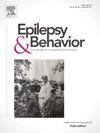Predictive value of the polygenic risk score for developing epilepsy: a systematic review and meta-analysis
IF 2.3
3区 医学
Q2 BEHAVIORAL SCIENCES
引用次数: 0
Abstract
Purpose
This study aimed to integrate the findings of previous studies to clarify the predictive value of the polygenic risk score (PRS) for epilepsy.
Methods
The MEDLINE, EMBASE, and CENTRAL databases were systematically searched for studies investigating PRS in epilepsy. Additionally, a meta-analysis was performed using random-effects models of studies that included PRS calculations using similar methodologies. The main outcome was the odds ratio (OR) for developing epilepsy based on the generalized or focal epilepsy PRS. The risk of bias (Q-Genie tool) and heterogeneity between the studies were also assessed.
Results
Overall, 585 records were retrieved on April 27, 2024. Eleven studies were included in this systematic review. Most studies were conducted on cohorts with European ancestry. The risk of developing epilepsy increased with a higher PRS, which was more pronounced in patients with generalized epilepsy. The total Q-Genie tool score of the included studies was 50.9 (good quality: >45). The meta-analysis included two studies and found that the ORs for generalized epilepsy were 2.18 (95 % confidence interval [CI] 1.91–2.48), 2.65 (95 % CI 2.07–3.39), and 4.62 (95 % CI 3.45–6.20) for the top 20 %, 5 %, and 0.5 % of the PRS distribution, respectively; the respective ORs for focal epilepsy were 1.19 (95 % CI 0.84–1.67), 1.40 (95 % CI 1.28–1.52), and 1.69 (95 % CI 1.27–2.24). Significant heterogeneity was found only in the top 20 % of PRS cases for focal epilepsy (I2 = 97.0 %; Q test p < 0.0001).
Conclusion
The PRS could be an effective tool for predicting development of epilepsy.

多基因风险评分对癫痫发生的预测价值:一项系统回顾和荟萃分析
目的本研究旨在整合前人研究成果,阐明多基因风险评分(PRS)对癫痫的预测价值。方法系统检索MEDLINE、EMBASE和CENTRAL数据库中有关癫痫PRS的研究。此外,使用随机效应模型进行了荟萃分析,其中包括使用类似方法进行PRS计算的研究。主要结局是基于全面性或局灶性癫痫PRS的发生癫痫的比值比(OR)。还评估了研究间的偏倚风险(Q-Genie工具)和异质性。结果2024年4月27日共检索到585条记录。本系统综述纳入了11项研究。大多数研究都是在欧洲血统的人群中进行的。发生癫痫的风险随着PRS的升高而增加,这在全身性癫痫患者中更为明显。纳入研究的Q-Genie工具总分为50.9分(优质:45分)。荟萃分析包括两项研究,发现PRS分布前20%、5%和0.5%的广泛性癫痫的or分别为2.18(95%可信区间[CI] 1.91-2.48)、2.65 (95% CI 2.07-3.39)和4.62 (95% CI 3.45-6.20);局灶性癫痫的or分别为1.19 (95% CI 0.84-1.67)、1.40 (95% CI 1.28-1.52)和1.69 (95% CI 1.27-2.24)。仅在前20%的局灶性癫痫PRS病例中发现了显著的异质性(I2 = 97.0%;Q检验p <;0.0001)。结论PRS可作为预测癫痫发展的有效工具。
本文章由计算机程序翻译,如有差异,请以英文原文为准。
求助全文
约1分钟内获得全文
求助全文
来源期刊

Epilepsy & Behavior
医学-行为科学
CiteScore
5.40
自引率
15.40%
发文量
385
审稿时长
43 days
期刊介绍:
Epilepsy & Behavior is the fastest-growing international journal uniquely devoted to the rapid dissemination of the most current information available on the behavioral aspects of seizures and epilepsy.
Epilepsy & Behavior presents original peer-reviewed articles based on laboratory and clinical research. Topics are drawn from a variety of fields, including clinical neurology, neurosurgery, neuropsychiatry, neuropsychology, neurophysiology, neuropharmacology, and neuroimaging.
From September 2012 Epilepsy & Behavior stopped accepting Case Reports for publication in the journal. From this date authors who submit to Epilepsy & Behavior will be offered a transfer or asked to resubmit their Case Reports to its new sister journal, Epilepsy & Behavior Case Reports.
 求助内容:
求助内容: 应助结果提醒方式:
应助结果提醒方式:


